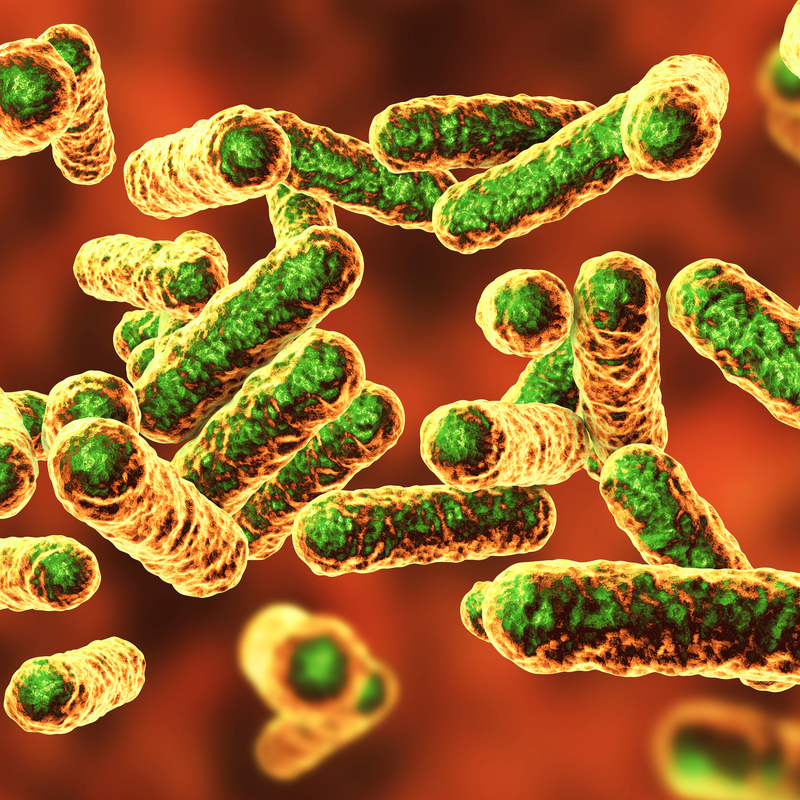
What is the Bartonella tamiae pathogen?
The Bartonella tamiae pathogen belongs to the Bartonella genus. It is a gram-negative, rod-shaped bacterium that lives inside a host cell like a parasite. The pathogen could be isolated from the blood of patients in Thailand. The Bartonella tamiae pathogen can cause diseases in humans. It was named after the late Tamara (Tami) Fisk, who ran the studies researching febrile illnesses in three patients in Thailand . Within these studies, the novel Bartonella tamiae pathogen was detected.
What are the histological characteristics of the Bartonella tamiae pathogen?
The Bartonella tamiae pathogen is monophyletic with the Eubartonellae, i.e. they are descended from one original form. Furthermore, it could be established that B. apis and B- tamiae are sister clades. This is understood as a closed descent community, which is described in biology as a sytematic unit.
However, both Bartonella species (b. apis and B. tamiae) diverged before the radiation of Eubartonellae. This circumstance suggests that Bartonella tamiae has a different evolutionary history than the eubartonellae. However, both colonise the bloodstream of mammals and can cause disease in humans, like the Bartonella tamiae pathogen. The monophyly of the two Bartonella species also suggests that the pathogenicity of the Bartonella genus evolved twice: once as an ancestor of the Eubartonellae and the other time independently of the lineage of the B. tamiae pathogen.
What symptoms did the Bartonella tamiae pathogen cause in the three Thai patients?
The patients who were later diagnosed with Bartonella tamiae infection complained of the following symptoms:
- Fatigue and/or general lassitude,
- Muscle pain (myalgia), which can be sharp, crampy or pulling,
- Headache,
- a nodular (maculopapular) rash that lasted for several weeks,
- Fever that lasted for almost a week.
In addition,
a mild anaemia, i.e. a disease
caused by a low red blood cell count,
was observed in all patients. This suggests an infection of the red
blood cells. Headaches, myalgia, but also
abnormalities of liver function, on the other hand, are complaints that are often found in the
context of a Bartonella infection and are not
only specifically attributable to the Bartonella tamiae pathogen.
How was the Bartonella tamiae pathogen diagnosed?
The Bartonella tamiae pathogen was isolated from blood samples from Khon Kaen province in Thailand. Blood clot samples were subjected to screening to determine the aetiology of febrile illnesses affecting Thai patients. For this , the blood clots were co-cultured with Vero E6 cells at 35 ° C with five per cent carbon dioxide for seven days. It was then plated out with rabbit blood enriched agar after a further seven days incubation period at 35 ° C with five per cent carbon dioxide on rabbit blood agar. By Gram staining and using a standard light microscope, the cultured bacteria could be visualised at a magnification of 1,000 times. In Thailand this was the first Bartonella infection to be detected in humans .
How is a Bartonella tamiae infection treated?
The treatment of a Bartonella tamiae infection does not differ significantly from the therapy of other Bartonella infections. As with other Bartonella infections, even acute illnesses can subside on their own in healthy people who have an intact immune system . This usually takes a little time, but antibiotic treatment is not always necessary. For example, this is the case with an uncomplicated Bartonella henselae infection. At the moment, there are no medical studies that prove that antibiotic treatment could shorten the duration of the disease. However, taking antibiotics can alleviate the patient's symptoms.
In complicated Bartonella infections, which mainly involve the central nervous system, it is advisable to prescribe antibiotics. The antibiotic should be taken for a treatment period of at least four to six weeks. If it is a patient with a weakened immune system, analgesic and/or anti-inflammatory drugs, so-called analgesics, can also provide relief. However, cortisone, i.e. so-called steroids, should be avoided because of the risk of fistula formation . The application of local heat can also temporarily relieve the pain, especially in the case of myalgia, which can be caused by a Bartonella tamiae infection . In addition, non-steroidal anti-inflammatory drugs have also been shown to reduce the symptoms of myalgia. These non-steroidal anti-inflammatory drugs include, for example, the following medicines:
- Aspirin,
- Diclofenac,
- Ibuprofen,
- Paracetamol
Alternatively
, an adequate magnesium intake can also provide relief from muscle cramps
. The trace element magnesium prevents muscle cramps.
Good sources of magnesium in food intake are:
- Whole grain products,
- Soybeans,
- Potatoes,
- Bananas,
- Soft fruits,
- Oranges,
- Poultry,
- Fish.
How was the Bartonella tamiae pathogen transmitted?
All Thai patients reported having caught and/or killed rats in their homes. Some patients also reported that they had contact with rats about two weeks before they became ill. However, there are still inaccurate research results to determine the animal reservoir and possible vectors of B. tamiae infection . However, some rodent studies conducted in northern Thailand have already shown that the Bartonella culture indicated a positive result in nine percent of the tested rodents. In addition, the pathogen has also been found in cats and fleas in Thailand.
